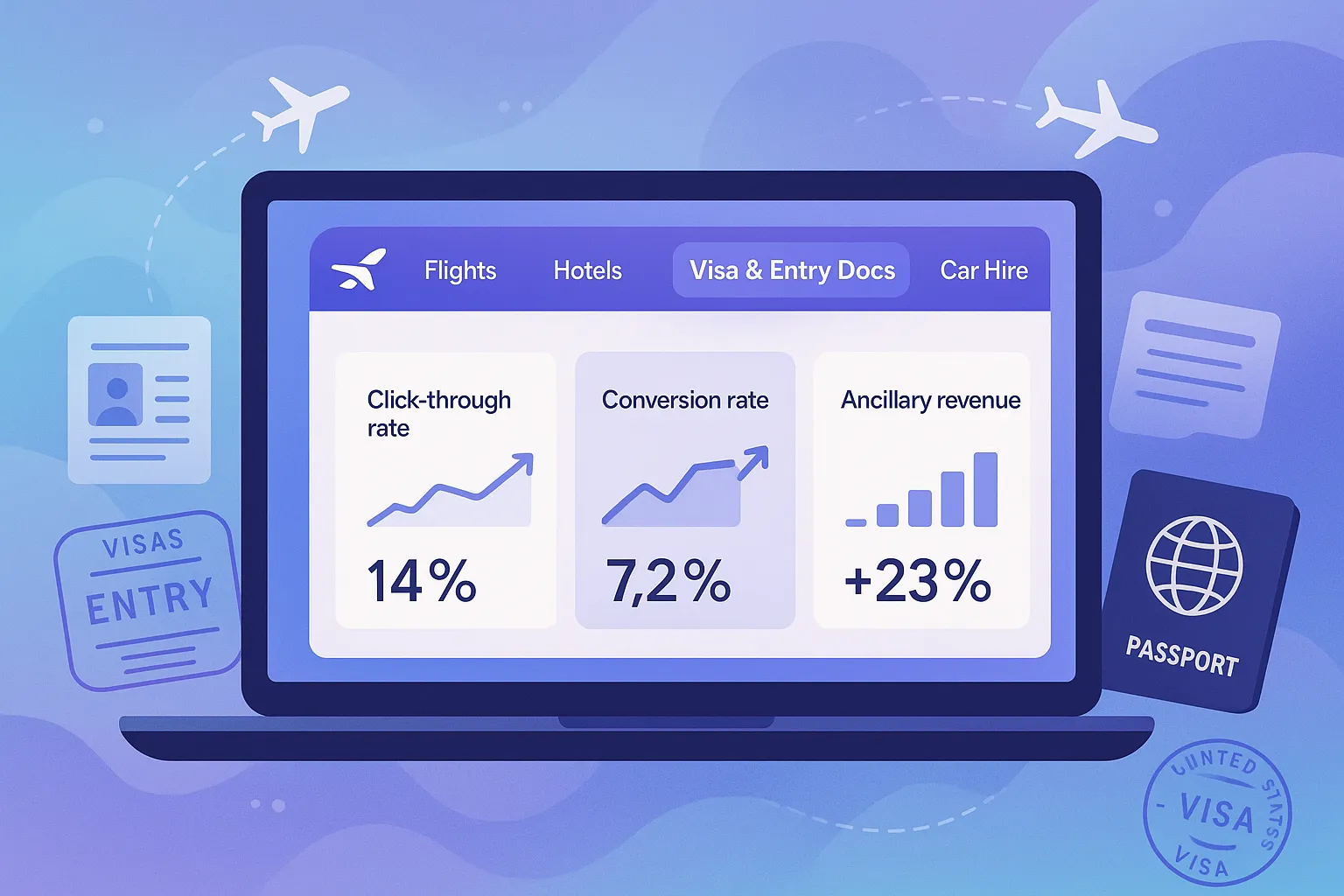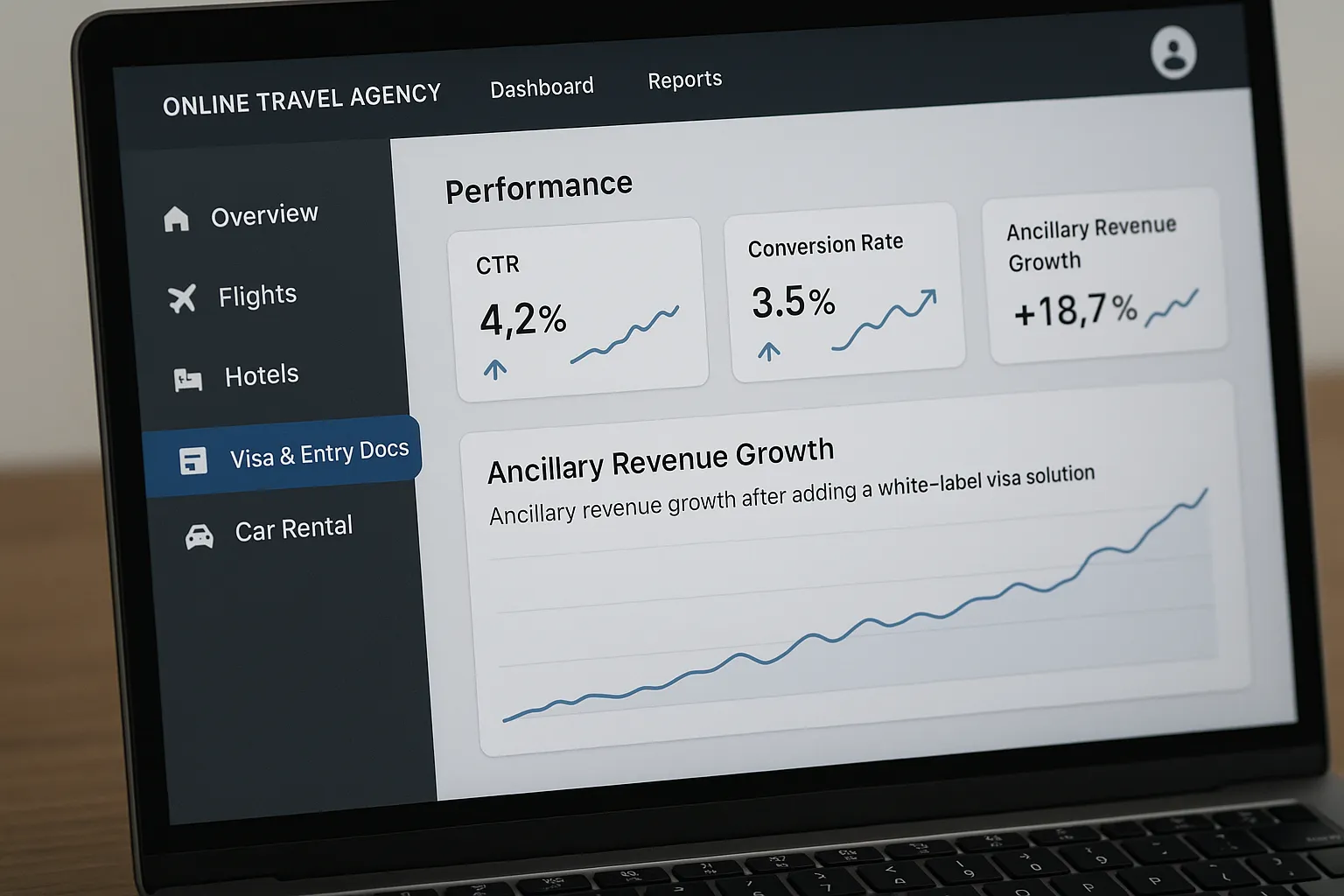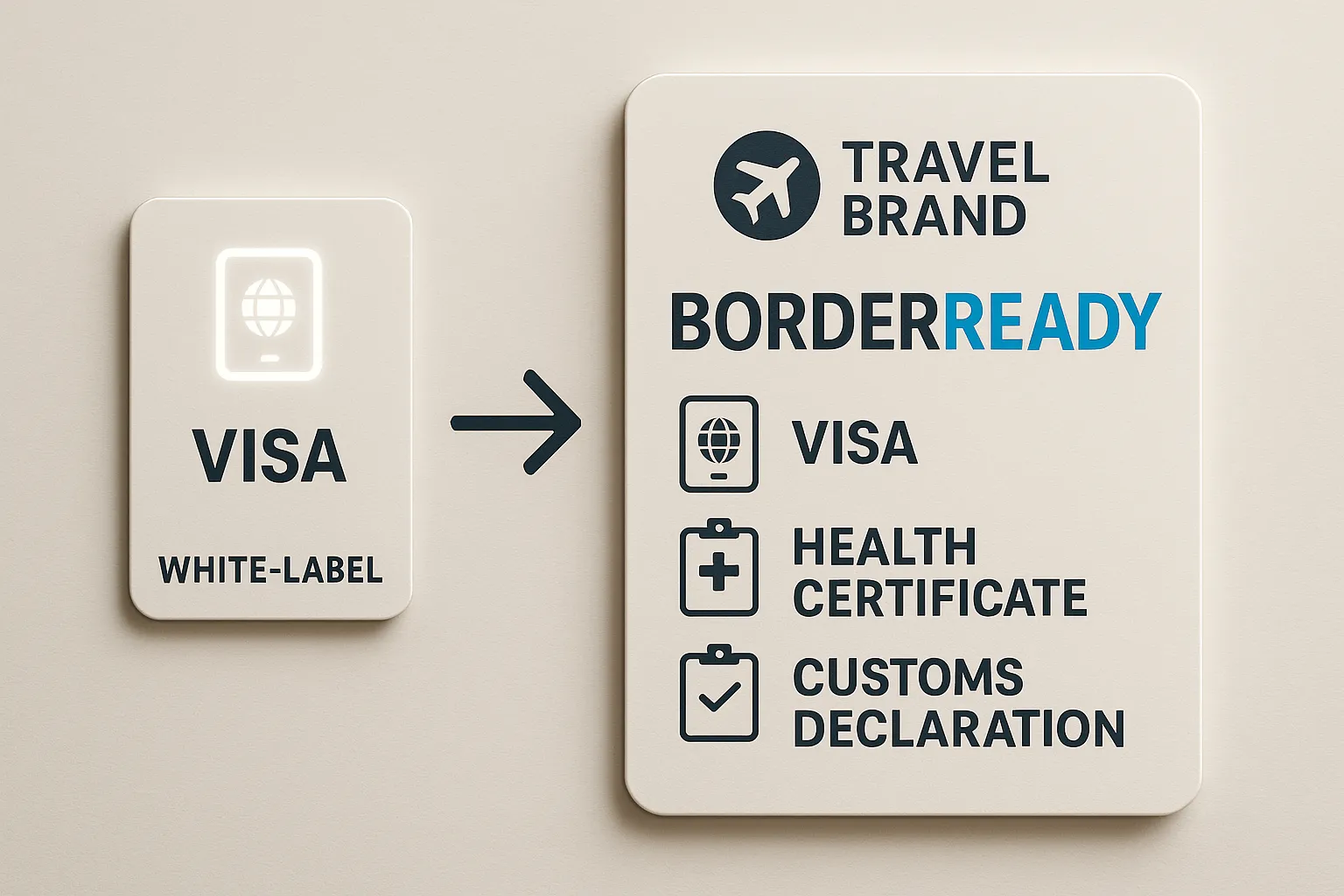How to Offer White-Label Visa Services Without Writing Code

Turning Border Formalities Into a Revenue Stream—No Developers Needed
Between new visa waiver programs, changing entry regulations and country-specific health declarations, your customers have never had more paperwork to juggle. Yet only a fraction of travel brands help them cross that last hurdle. Offering a white-label visa service is the simplest way to fill that gap—and you no longer have to spin up an engineering squad to do it.
In this guide we’ll show you, step by step, how to launch a fully branded visa solution without writing a single line of code. We’ll look at the commercial upside, the technical requirements (spoiler: almost none) and the operational checkpoints you need to tick off before you press “Go Live.”
1. What Is a White-Label Visa Service?
A white-label visa service lets a traveller research, apply and pay for the required travel authorisation inside your own booking flow, with your colours, logo and tone of voice. Behind the scenes, a visa-specialist provider does the heavy lifting—document validation, government submissions, status tracking and customer support.
Because the front end is hosted for you, implementation is closer to adding a payment provider than to building a new product. In practice, there are two deployment flavours:
- Hosted web app – You place a link or button that sends customers to a co-branded application portal.
- Embedded widget – A low-code iFrame or JavaScript snippet that sits in a modal or ancillary step of your check-out.
Both options can be launched in days, not months.
Need inspiration? Explore three business models that already capitalise on e-visas in our article on travel visa document systems.
2. Why Offer No-Code Visa Processing?
-
Capture untapped ancillary revenue
Average service fees range from US $12–25 per order. With a 5 % conversion rate on long-haul itineraries, an OTA selling 50 k yearly bookings can add six figures to its bottom line. -
Slash customer service tickets
“Do I need a visa?” and “Where can I apply?” are consistently among the top pre-departure queries. Deflecting those questions to an automated flow frees up your agents for higher-value tasks. -
Boost NPS and repeat bookings
Helping travellers clear immigration smoothly translates into fewer trip-ruining surprises—and happier reviews posted straight from the arrivals hall. -
Stay compliant by default
Visa providers update requirements instantly when governments tweak their rules. You inherit that compliance without lifting a finger.
3. Hosted vs. API: Which Route Fits Your Roadmap?
| White-label (no-code) | API integration | |
|---|---|---|
| Setup time | 1–2 days | 3–12 weeks |
| Engineering effort | None | Medium–high |
| Custom UI control | Moderate | Full |
| Ongoing maintenance | Provider-managed | Shared |
| Ideal for | SMEs, proof-of-concepts, seasonal offers | Large platforms with dedicated dev teams |
If you eventually outgrow a hosted flow, most providers (including SimpleVisa) let you graduate to their API without scrapping existing accounts. For a deep dive into the API path, see How eVisa APIs work: Step by Step.
4. The 5-Step Checklist to Go Live
Step 1 – Sign the commercial agreement
Expect two fees: a setup/on-boarding fee (sometimes waived) and a per-application commission split.
Step 2 – Configure your branding
Upload logos, choose color themes, set default languages and define customer-facing email templates. Most portals have a self-service console.
Step 3 – Add the entry point
• Hosted page: create a menu item (“Visa & Entry Docs”) or include a callout in the post-booking confirmation.
• Embedded widget: paste the code snippet at the relevant spot in your check-out or manage-booking flow.
Step 4 – Test end-to-end
Run at least one real transaction with a test card or coupon to verify:
- Correct redirect after payment
- Email notifications
- Status updates in your partner dashboard
Step 5 – Launch and monitor
Activate the link site-wide. Track early-stage KPIs: click-through rate (CTR), application start rate and conversion rate. A/B test copy or placement to optimise.

5. UX Tips That Drive Conversions
-
Surface the visa widget at three touchpoints:
- Post-search (route results page)
- Checkout ancillaries step
- Pre-departure reminder email (T-30 days)
-
Speak the traveller’s language
Use “Entry requirements” instead of “visa” for markets where waiver programmes apply. -
Show dynamic pricing transparency
Break down “Government fee + Service fee” to build trust and fend off sticker shock. -
Reduce form fatigue
Prefill nationality and travel dates from the existing booking when using the embedded widget.
6. Handling Customer Support & Compliance
• Tier 1 queries (password reset, application status) are usually managed by the visa provider’s 24/7 team.
• Tier 2 queries (edge-case eligibility, rejected applications) escalate to immigration specialists on the provider side.
• Your brand remains the first touchpoint; emails carry your domain via white-label SMTP.
On the compliance front, reputable providers offer:
- SOC 2 or ISO 27001 data-security certifications
- GDPR/CCPA-compliant data processing agreements
- Indemnification clauses covering government fines arising from processing errors
Need a deeper security rundown? See How Secure is the Electronic Visa System?.
7. Measuring Success
Use the first 90 days as a pilot and track these metrics:
- Take-rate – Applications / Eligible PNRs
- Average order value uplift – Ancillary revenue per booking
- Support ticket reduction – Visa-related enquiries month-over-month
- Approval rate – % of submitted applications that receive a positive decision (industry benchmark: 97 %+ for tourist travel)
A simple ROI formula:Net Profit = (Applications × Margin per Application) – Setup Fee – Internal Promo Costs
If Net Profit turns positive within one quarter, you’ve got a winner.
8. Future-Proofing: Beyond Visas
White-label frameworks can extend to other border-crossing formalities:
- Digital health certificates
- Customs declarations
- Airport security fast-track passes
By consolidating these services under the same umbrella, you turn your platform into a one-stop pre-departure hub—deepening customer loyalty and defending your brand against commoditised price comparison.

Key Takeaways
- No code, no problem: Hosted white-label portals can be launched in under a week.
- Revenue meets retention: Visa services monetise the post-booking phase while improving traveller experience.
- Control remains yours: Branding, pricing and customer communications stay in your hands.
- Start small, scale fast: Prove value with a hosted link today; graduate to an API when your roadmap allows.
Ready to see a live demo tailored to your booking flow? Request one here and start turning border bureaucracy into your next growth engine.